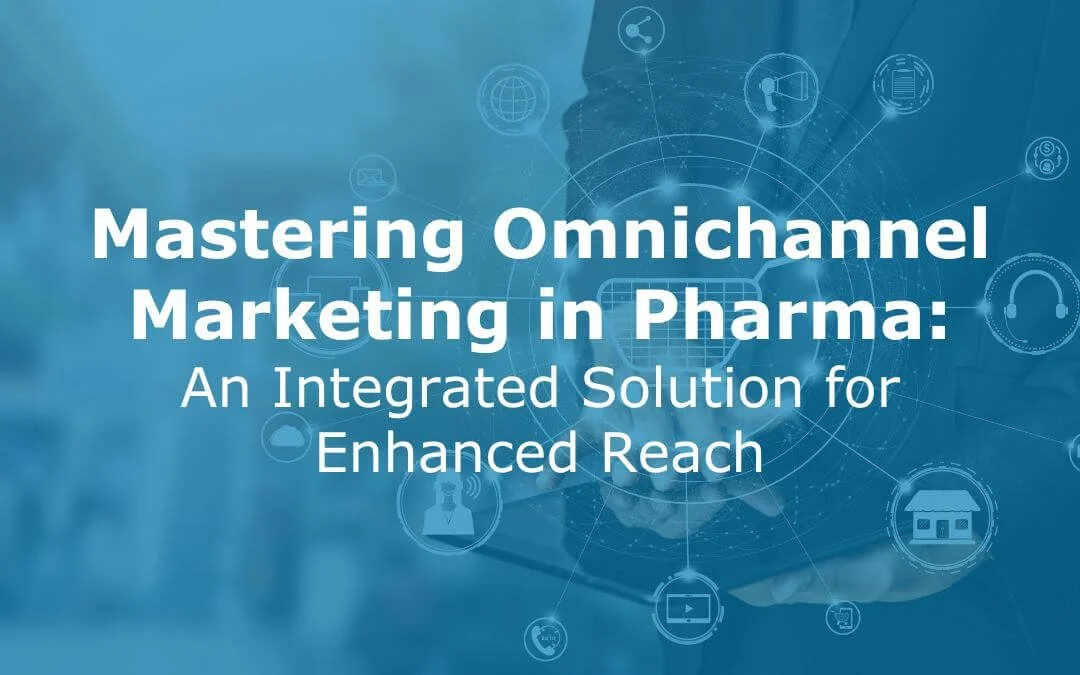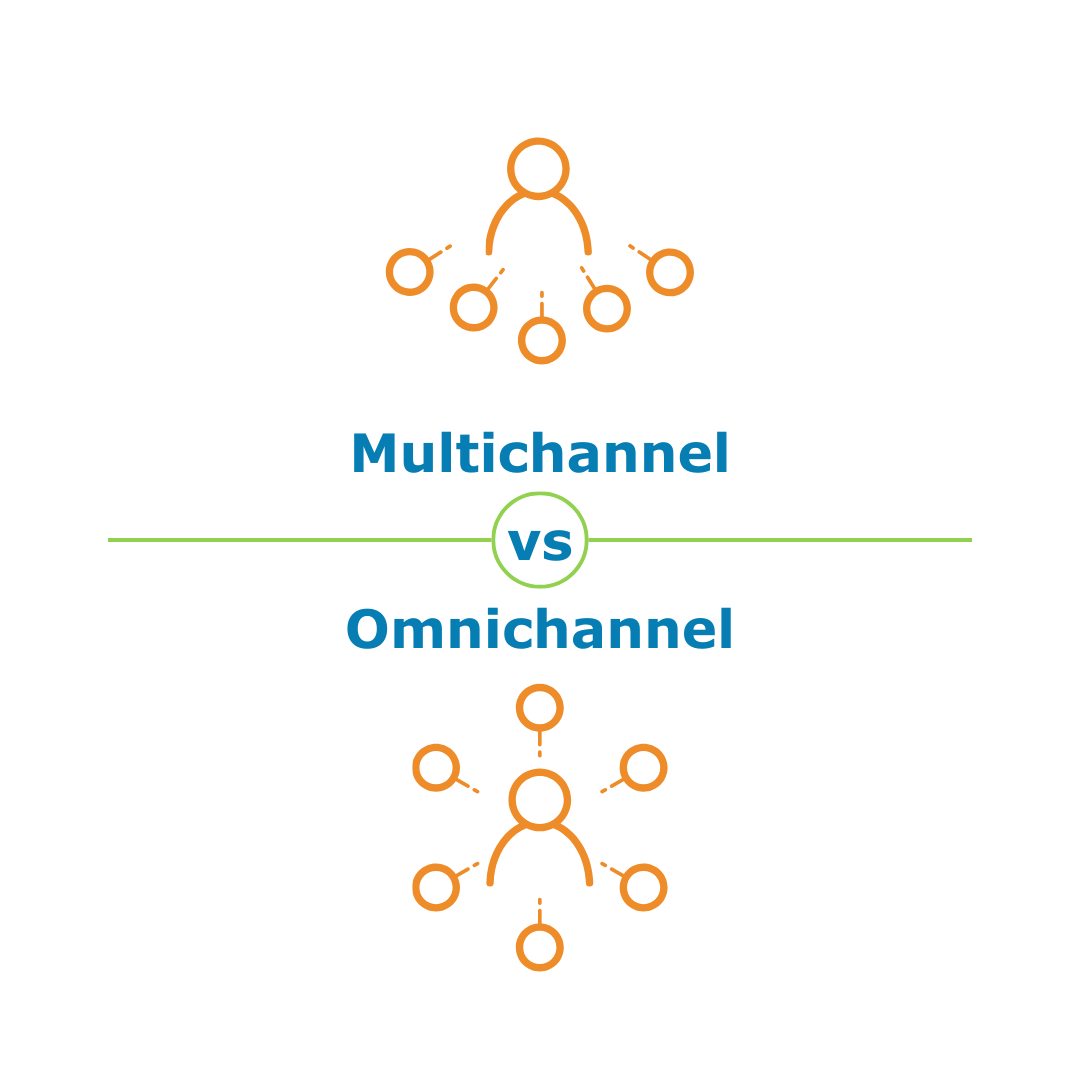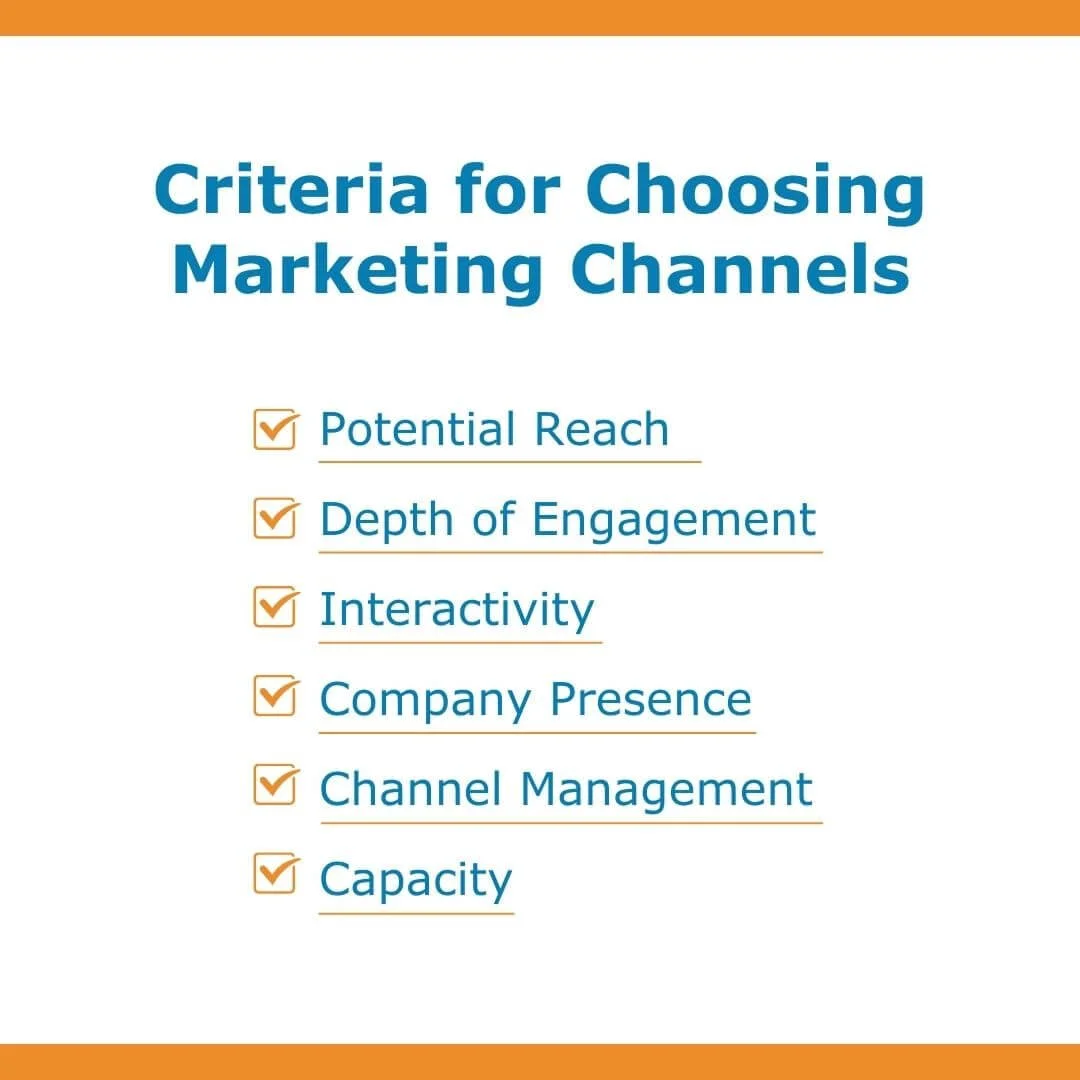As we enter 2024, conventional approaches to reaching your prospective audience are waning in effectiveness.
Instead of reaching your prospective clients on a handful of channels, it’s becoming more and more important for your brand to be everywhere all at once.
Omnichannel marketing presents an integrated solution to this challenge.
This marketing strategy ensures that your brand's presence is consistent and impactful across meaningful online platforms and touchpoints.
In this article, we explore how omnichannel marketing addresses the unique challenges of reaching your target audience. We also cover some of the benefits of this multifaceted approach.
Understanding Omnichannel Marketing in Pharma
Omnichannel marketing in pharma is a holistic approach that integrates multiple marketing channels to provide a seamless client experience.
In an omnichannel strategy, your messaging, tone, and engagement are consistent based on your audience’s needs at each stage of their buyer journey.
At every point, the goal is to provide value, engage your target audience, and establish your brand as the authority within your area of expertise.
According to Hubspot, an omnichannel experience "should be the same for customers regardless of the platform or method they choose to use."
For businesses looking to establish a strong presence with pharmaceutical companies, an omnichannel marketing plan allows you to meet your audience where they are and deliver value at every interaction.
It’s also a critical element for pharmaceutical companies to use when reaching their audiences. This opens the door for you to be a strategic partner in helping your target audience better reach their target audience.
The Difference Between Multichannel and Omnichannel
The difference between multichannel and omnichannel marketing lies in how they approach customer engagement.
Multichannel Marketing
Multichannel marketing involves using multiple platforms to communicate with customers. However, these channels often operate in silos, with each delivering content independently.
While a multichannel approach provides a broad audience reach, it can lead to a disjointed and inconsistent user experience.
Each channel functions separately without a cohesive strategy.
For example, if your company details the benefits of a newly launched product on LinkedIn but focuses on industry predictions with your website, you’ve missed a chance to present a cohesive message to your audience about an important moment.
Omnichannel Marketing
Omnichannel marketing on the other hand offers a more integrated and customer-centric approach across all channels.
The experience is still the same whether a customer interacts with a brand through digital ads, social media, email, or direct engagement.
According to Forbes, companies that apply omnichannel engagement strategies retain up to 89% of their clients.
The transition from conventional multichannel strategies to more integrated omnichannel approaches has become the cornerstone for successful engagement.
It reflects a deeper understanding of the interconnectedness of digital audiences.
The Client-Centric Approach in Omnichannel Marketing
A client-centric approach in omnichannel marketing places your prospective client’s needs, preferences, and values at the heart of every marketing initiative.
This is becoming more important as stakeholders and key decision-makers are bombarded on every front with ads, information, emails, social posts, and a slew of other noise.
Omnichannel marketing offers a seamless way to reach your audience and position your brand as the go-to for your products or services without relying on being the noisiest in the room.
For example, let’s say you want to launch a marketing campaign that combines educational webinars, interactive website content, and targeted social media content aimed at businesses that serve pharmaceutical companies.
This campaign not only disseminates valuable information but also extends your reach far beyond the limits of a single platform or strategy.
Omnichannel marketing – when centered around your prospective clients – can enhance engagement and foster a sense of trust and loyalty.
When you address the unique needs of pharmaceutical companies across all touchpoints, the result is greater brand awareness and a stronger brand reputation.
Crafting Effective Customer Journeys
In pharmaceutical marketing, segmenting your content according to multiple audience groups allows for tailored strategies that resonate with each target.
As an example, for audience segments who are unaware of your brand, broader more educational content is usually an effective way to reach them.
For audience segments who know your brand and have previously interacted with you, more personalized content that speaks to the core of their challenges, needs, or desires is likely to resonate.
Mapping out customer journeys in an omnichannel context involves a meticulous process. It starts with gathering comprehensive data to understand different customer segments, followed by designing unique paths that cater to the specific needs and preferences of each segment.
One example is a campaign targeting Product Managers. Understanding their needs and the challenges they’re currently facing, and then developing marketing collateral that helps walk them through your solutions to these challenges is a strong starting point.
Nurturing this segment toward your ultimate goal may involve email campaigns that explore different pain points, educational material that presents comprehensive guides to overcoming specific issues, and even phone calls to understand how your business can best serve them.
Staying on their radar through personalized follow-up, meaningful social media posts, and case studies detailing your successes in similar situations are all potential options to include in an omnichannel approach to not only winning their business, but serving them.
Tackling Common Challenges with Omnichannel Strategies
Marketing to reach pharmaceutical companies faces its unique set of challenges, including spiraling costs, lack of efficacy, misaligned messaging, and the overwhelming use of multiple channels.
An integrated omnichannel approach offers a cohesive solution to these pain points.
By streamlining marketing efforts across various channels, companies can reduce unnecessary expenses and minimize content redundancy.
This approach ensures that content is not only repurposed effectively but also optimized for each channel, thereby reducing waste and maximizing impact.
Moreover, an omnichannel strategy simplifies using multiple channels in your pharma content marketing plan.
Instead of disparate efforts across different platforms, a unified strategy provides a clear, cohesive path for engagement, making the marketing process more manageable and effective.
This integrated approach not only enhances the efficiency of marketing campaigns but also ensures that each campaign delivers a consistent, high-quality experience to the audience.
Leveraging Data-Driven Optimization
Data analytics can shape and fine-tune omnichannel strategies so they are responsive, dynamic, and effective.
Through the analysis of customer interactions, observable online activity, and behavior on your website, marketers can continuously refine their approach, making adjustments that align with evolving needs.
This data-driven optimization is not limited to reacting to trends but involves anticipating them, thus staying ahead in a competitive landscape.
For instance, by analyzing the performance of content across your own channels and examining your competitors’ strategies, you can determine where to focus your ongoing omnichannel efforts.
This foresight can lead to a significant increase in engagement and conversion rates.
Another application of data analytics is in understanding your target audience’s behavior to create more personalized and effective content for prospective clients.
Looking forward, the trend in data utilization for omnichannel marketing is set to become even more sophisticated.
With advancements in AI in pharma marketing, the scope for predictive and prescriptive analytics will expand, enabling even more nuanced and anticipatory marketing strategies.
Strategic Channel Selection and Utilization
Selecting the right channels for an omnichannel marketing strategy is both an art and a science.
The criteria for selection include factors such as reach, depth of engagement, interactivity your company’s presence, and your bandwidth for managing multiple channels.
Reach determines how wide a spectrum of audience can be covered, depth gauges the level of engagement and connection possible through a channel, and interactivity assesses the extent to which two-way communication is feasible.
Each channel, from social media to professional journals, has its strengths and limitations. The key is to identify which channels will best serve your goals, know where your audience spends, then synergize these elements in a cohesive strategy.
Best practices for effective channel use in omnichannel pharma marketing involve a judicious mix of broad-reaching platforms and more niche, specialized channels.
For instance, social media can be used for wider outreach and awareness, while your website can be leveraged for deeper engagement with your target audience.
It’s also critical that your business remains active on the channels you choose to incorporate into your strategy. It’s better to produce high-impact content consistently across fewer channels than to produce low-impact content sporadically on every channel.
The effectiveness of these channels is amplified when their use is aligned with the overall marketing goals and the specific needs of the target audience.
Benefits of Omnichannel Engagement over Multichannel
When contrasting omnichannel engagement with traditional multichannel approaches, the advantages become increasingly clear.
Omnichannel marketing presents a harmonized, customer-centric approach, in stark contrast to the often disjointed multichannel strategies.
In omnichannel marketing, every channel is interlinked. It provides a seamless and consistent experience for the customer, which is vital in the complex and highly regulated pharmaceutical industry.
One pharmaceutical company in Japan reported a significant uptick in customer awareness after implementing an AI-driven omnichannel approach to promote the launch of a new drug.
Another example is the Danish pharma company Novo Nordisk, which improved its “delivery of relevant experiences at scale” through its Omnichannel Customer Experience Hub.
They noted a marked improvement in customer engagement, with better tracking of customer profiles and more efficient use of resources.
The key takeaway here is the undeniable efficiency and effectiveness of omnichannel marketing. It not only enhances customer experience but also streamlines marketing efforts, leading to higher engagement and better outcomes.
The Future of Omnichannel Marketing in Pharma
Omnichannel marketing is revolutionizing the pharmaceutical industry, offering a path to more effective and personalized client engagement.
It’s imperative for businesses that serve pharma companies to embrace this approach to stay competitive.
This strategy ensures a seamless integration of various channels, meeting the evolving needs of both healthcare professionals and patients.
As we look to the future, the importance of omnichannel marketing will only grow, driven by advancements in technology and changing customer expectations.
If you serve pharmaceutical companies, adopting omnichannel strategies today will put you at the forefront of reaching your ideal audience in new and profound ways.
Ready to get started? Contact us today to start implementing omnichannel strategies in your marketing plan.



